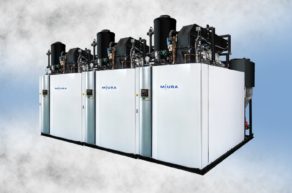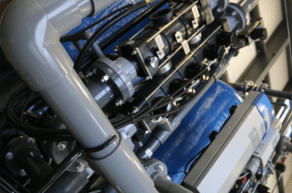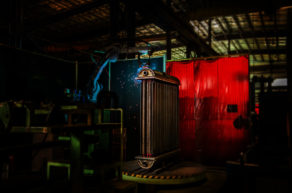What Is In-Service Efficiency for Steam Boilers?
Above: Kyle Richards, Division Manager at Miura America Co, Ltd., talks about the impeccable in-service efficiency of Miura boilers.
When it comes to steam industrial boilers, as with anything else, steam efficiency is the name of the game. For judging the fuel efficiency of boilers, most rely on fuel-to-steam efficiency, which is the most popular measurement for boiler efficiency. However, fuel-to-steam efficiency doesn’t always tell the whole story. Another way to judge the efficiency of an industrial boiler system is to calculate its in-service efficiency.
The main flaw in measuring fuel-to-steam efficiency is that it’s only relevant when a boiler is working at maximum capacity. Obviously, most boilers aren’t running at maximum capacity 24/7, and so the fuel-to-steam measurement doesn’t take into account the specific service operations. Energy losses that may take place while a boiler is running in standby mode, during startups, or during blowdowns are not accounted for with fuel-to-steam efficiency, making it an imperfect method of calculating the overall efficiency of a boiler system.
Meanwhile, in-service efficiency measures the overall performance of a boiler based on what it’s being asked to do. In-service efficiency is the true bottom line of boiler efficiency, taking into account how the job of a boiler changes between different times of the day and night and even different days of the week. It acknowledges that there will be times when a boiler is running high loads, times when it’s running low loads, and times when the boiler may be running in standby mode.
The goal of in-service efficiency is to measure how a boiler responds to real-world situations and actual operational needs. It’s designed to reflect how a boiler handles a facility’s operational needs, meaning how much steam a facility needs, when they need that steam, and how those steam needs may change from one day to the next or during the course of the day. Needless to say, configuring in-service efficiency is a little more complicated than calculating steam-to-fuel efficiency. However, it helps to give us get a clear idea of how efficient a boiler is at meeting the specific needs of a facility.
Miura’s boilers are the best on the market when it comes to in-service efficiency. Miura designs its boilers to adapt quickly to changing levels of steam demand, so there is significantly less fuel wasted compared to other boilers. Both the LX and EX series of Miura boilers can start producing steam from a cold startup in less than five minutes whereas other boilers may take an hour or more to start operating at peak capacity. Miura boilers also use less water than other boilers, which helps to maximize heating surface transfer. This helps to improve in-service efficiency but may not show up when measuring fuel-to-steam efficiency.
The fuel-to-steam efficiency between Miura boilers and other boilers may be close, but Miura boilers have an in-service efficiency roughly 20% better than comparable boilers. The result of this for facilities that use Miura boilers is a 10 to 40 percent savings in fuel costs. Over time, using boilers that focus on maximizing in-service efficiency can help save a significant amount of money.




